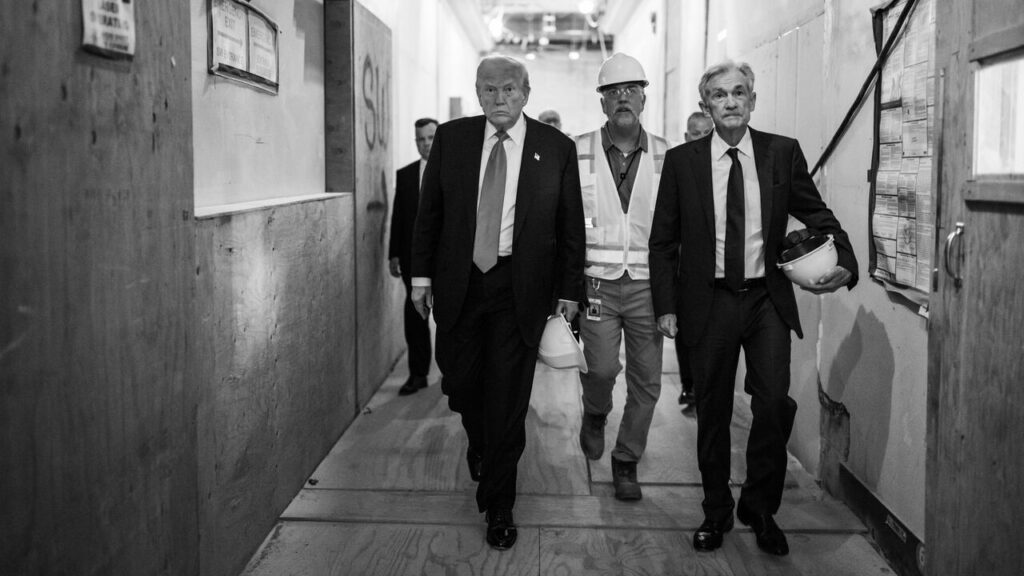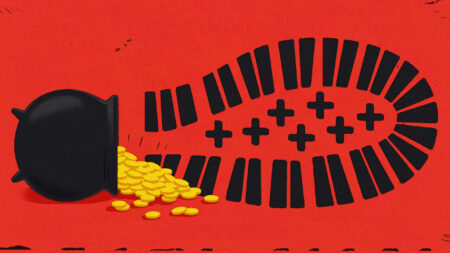The Federal Reserve, often regarded as the backbone of the global economy, exudes an unusual sense of calm amidst the tumult of global financial affairs. What distinguishes the Fed from other central banks around the world is its tendency toward unity, especially in decisions relating to monetary policy. While counterparts in various corners of the globe frequently find themselves embroiled in debates and disagreements concerning the best course for interest rates, members of the Federal Reserve have historically displayed a notable cohesion. However, this tranquility appears to be fracturing at a time that coincides with an uptick in President Donald Trump’s criticisms of the institution and the economic pressures resulting from his administration’s tariffs.
On the significant date of July 30th, a pivotal moment unfolded within the Fed that highlighted the increasing tensions among its leadership. In a surprising turn of events, two prominent rate-setters, Christopher Waller and Michelle Bowman, broke from the consensus by voting against the majority decision to maintain interest rates within the range of 4.25% to 4.5%. Instead, both Waller and Bowman advocated for a reduction in interest rates by a quarter percentage point. This dissent was noteworthy not only for its content but also for its rarity; it marked the first instance of a “double dissent” among governors on the Fed’s board in over three decades, indicating a growing chasm within the central bank regarding the direction of its monetary policy.
The backdrop to this event is significant. President Trump has been vocally critical of the Federal Reserve, particularly targeting its Chairman, Jerome Powell, for perceived sluggishness in reducing interest rates. Trump’s tweets and public statements have consistently pushed for lower rates, asserting that such measures would bolster economic growth and ease the burden on American consumers and businesses. As tariffs implemented by the Trump administration exert pressure on the U.S. economy, the decision-making process within the Fed is increasingly complicated. Rate cuts could potentially stimulate growth, but they also carry the risk of inflation, creating a delicate balance for Fed policymakers.
Moreover, the divergence in perspectives among Fed officials reflects broader uncertainties permeating the U.S. financial system. Waller and Bowman’s push for a rate cut suggests a potential concern regarding economic stability and growth prospects, especially amid ongoing trade tensions and uncertainty regarding fiscal policies. These apprehensions come against the backdrop of fluctuating economic indicators, with some suggesting that the labor market remains robust while others signal potential slowdowns in sectors sensitive to interest rates and global trade.
In analyzing this dynamic, one cannot overlook the historical context of dissent within the Federal Reserve. For over three decades, the institution has prided itself on a semblance of unity in its decision-making processes, especially during times of economic uncertainty. The recent dissensions indicate a significant shift that could facilitate a broader discussion on monetary policy approaches moving forward. If debates within the Fed become more commonplace, it could signal not only a transformation in how monetary policy is conceived but also how it is implemented in response to external pressures such as government criticism and market demands.
As the Federal Reserve navigates these tumultuous waters, the implications of dissent and the choices it makes now will resonate throughout the global economy. The potential for a change in interest rates could influence borrowing costs for consumers and businesses alike, affecting spending and investment decisions that drive economic activity. The Federal Reserve’s ability to project unity while addressing the divergent views among its members could ultimately determine not just its credibility but also the trajectory of the U.S. economy in the months and years to come. In a reality defined by uncertainty and volatility, the Fed’s serene façade is increasingly at risk, leaving observers to speculate on its future direction.









